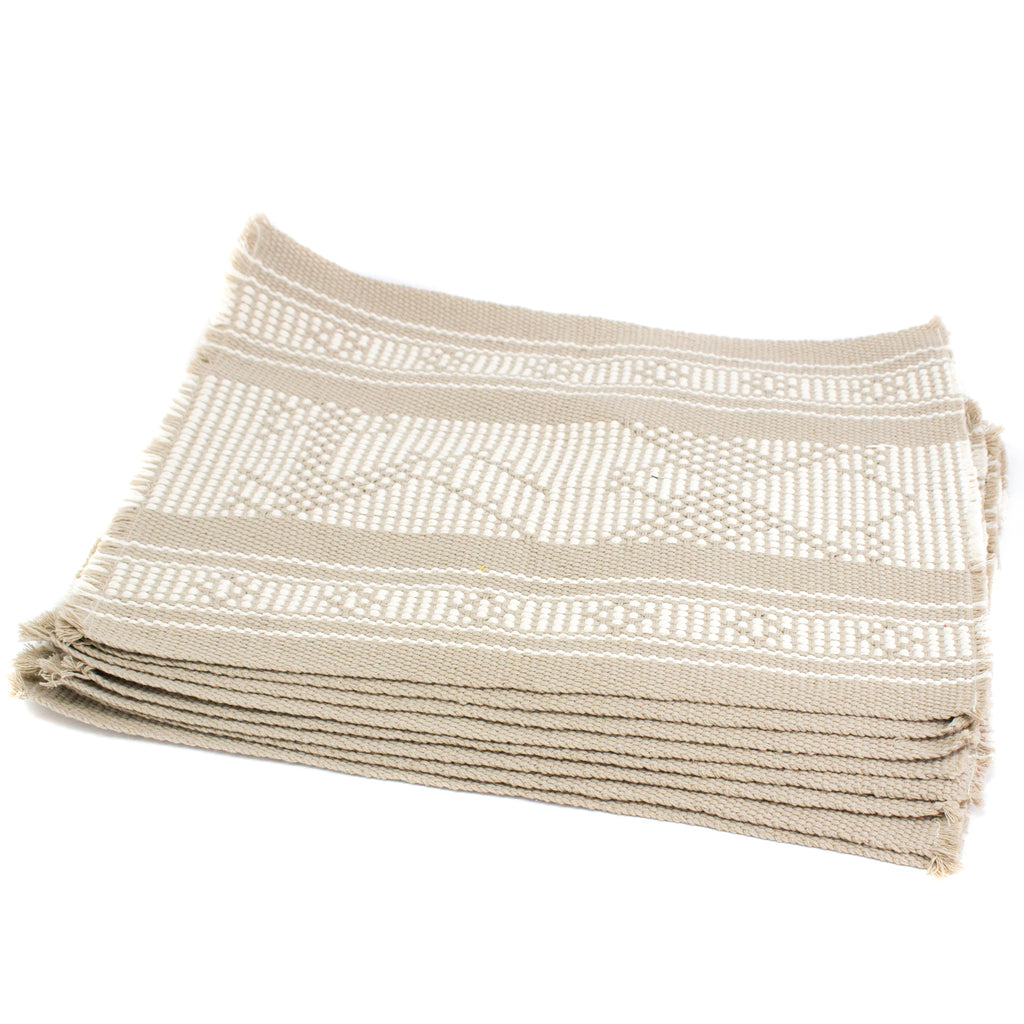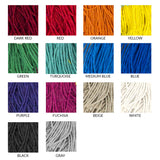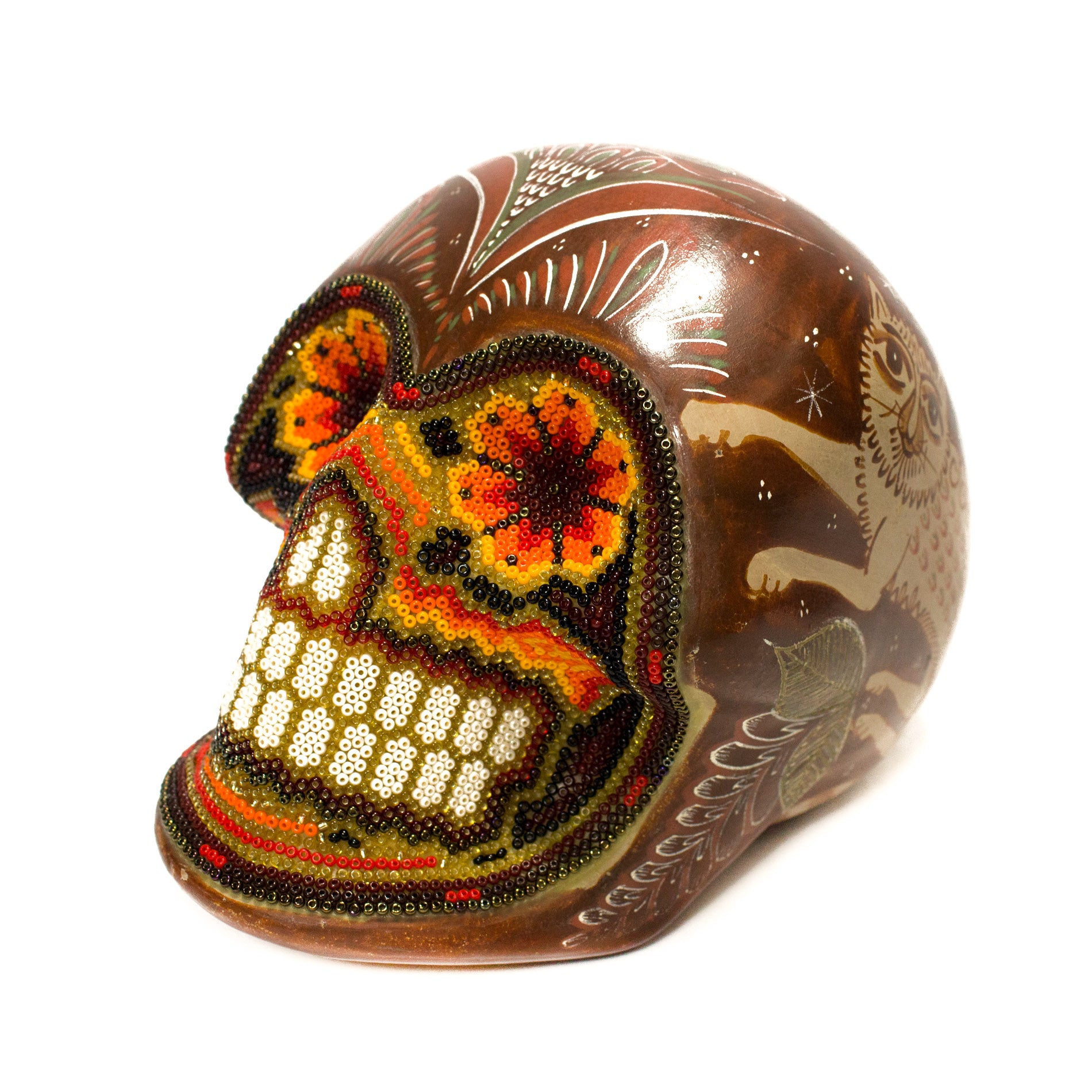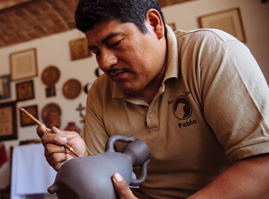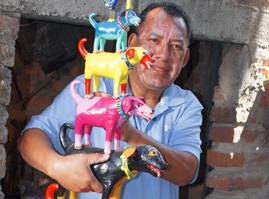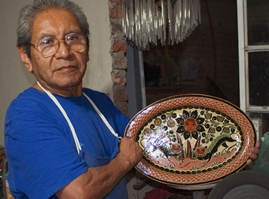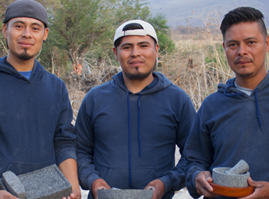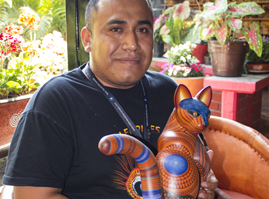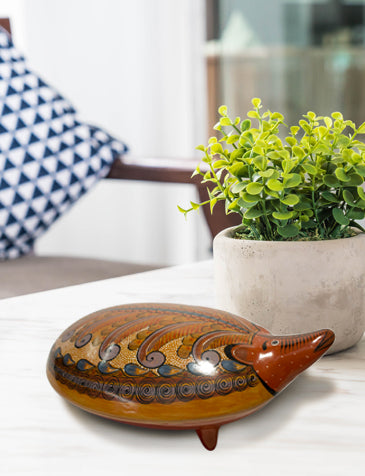Individual Table Cloths Duotone Sets, Oaxacan Backstrap Weaving
- Sold By: PATRICIA HERNANDEZ CHAVEZ
- Type: BACKSTRAP WEAVING
Adding a beautiful background to a delicious dish can work wonders on any special date, but if you are more into continued inspiration, these table cloths are exactly what you need. Knitted with exquisite dedication and minuteness, Artisan Patricia Hernandez Chavez has become world renown by the beauty of her traditional Oaxacan Backstrap Weaving pieces and any fan of woven arts fan will most certainly enjoy them!
Details:
This piece is currently not in stock. Once your order is processed, the artisan will receive an order to produce a replica of the item you ordered. Given the handcrafted and artistic nature of their pieces, your purchase may have some variation in design and shape. It is these same variations that make every item unique.
Elaboration times range from 20-35 days.
Measurements:
10" width x 15" long
Weight:
4 set - 0.88 lbs
6 set - 1.10 lbs
8 set - 1.32 lbs
Around 15 miles away from the capital of the state of Oaxaca, in the heart of Zapoteca land, lies the town of Santo Tomas Jalieza, from which the word Jalieza means “under the church”, it is here where women from this community create products such as table runners, table cloths, bracelets, coin purses, pens, backpacks, makeup purses and even curtains.
Each one of these women with their Waist Looms, creates a dance of their own, with the sounds of threads being tightened, the wooden machete, the combs and the breathing of the artisans, this activity that around 80% of the people in town work in, is an exquisite form of expression.
They then decide on the color combinations to apply to the piece the moment they set up their looms, as well as the animal or theme to represent.
The waist loom, also known as a strap loom, is a simple and portable loom that allows for easy rolling and transportation once it has been assembled.
The first step is to prepare their warp, for this step, artisans use a small lamp made out of wood.
Once the threads are formed into yarn balls, the threads are organized according to the design to be elaborated in the weaver or “komen”. The komen is a wooden tool, measuring a little over 2 meters long and 5cm wide, it contains notches set on different heights that dictate the length of the fabrics to be woven. During this process, the weaver counts the spins the thread does, having to cut and bind them through knots with the different colors employed in the design. The preparation of a single thread before being placed in the loom can take up to an entire day. The length of the woven fabric in a Waist Loom is almost unlimited, however its width usually doesn’t surpass 60cms.
The threads in the warp are mounted in between two horizontal wooden sticks, one of them is hooked to either a tree or a post, while the other is bound to the waist by using ropes and a belt, that is usually made from leather. The process of mounting the threads to the loom is a complicated one, which usually requires lots of experience and skill.
Once the warp has been mounted, the artisan starts weaving the fabric’s weft using a thrower, which is a piece of wood shape as an arrow, used to roll thread around it before incorporating it to the weave. Using the wooden machete, the weft is compressed and adjusted after every turn of the thread, being aided from another two pieces in the loom: the “olibalte”, which rises the treads from the warp and the “pat akan”, which sets them downwards.
Once the canvas has been weaved, the artisan unties it from the loom’s rods, so she can apply the finishing touches. Untied threads are rolled and knotted to give a clean finish to the piece.

